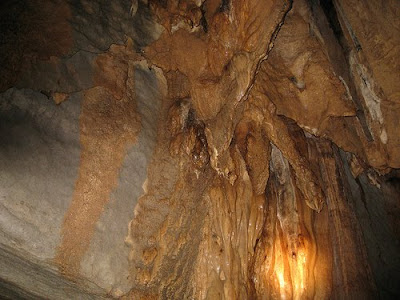The Puerto Princesa Subterranean River National Park, a UNESCO World Heritage Site, features a spectacular limestone karst landscape with its underground river. A distinguishing feature of the river is that it flows directly into the sea, and the lower portion of the river is subject to tidal influences. The area also represents a significant habitat for biodiversity conservation. The site contains a full mountain to the sea ecosystem and protects forests, which are among the most significant in Asia.
As the city was recently declared a highly-urbanized city, per Section 29 of the Local Government Code of the Philippines, it is no longer under the administrative supervision of the provincial government of Palawan, and its residents are no longer eligible to vote for provincial officials.
 Puerto Princesa City lies at the mid-section of the long strip of Palawan Island province. It is approximately 306 nautical miles from Manila, 206 nautical miles to Panay Island and about 250 nautical miles to Zamboanga. It is bounded on the north by the municipalities of San Vicente and Roxas and on the south by the municipality of Aborlan. To its west is the South China Sea while to the East lies the Sulu Sea.
Puerto Princesa City lies at the mid-section of the long strip of Palawan Island province. It is approximately 306 nautical miles from Manila, 206 nautical miles to Panay Island and about 250 nautical miles to Zamboanga. It is bounded on the north by the municipalities of San Vicente and Roxas and on the south by the municipality of Aborlan. To its west is the South China Sea while to the East lies the Sulu Sea.Total land area is 253,982 hectares stretched over 106 kilometers long with the narrowest breadth of 8.5 kilometers in Barangay Bahile.
SOURCE: http://en.wikipedia.org/wiki/Puerto_Princesa_City
 The Puerto Princesa Subterranean River National Park is located about 50 kilometers north of the city of Puerto Princesa, Palawan, Philippines. The National Park is located in the Saint Paul Mountain Range on the northern coast of the island. It is bordered by St. Paul Bay to the north and the Babuyan River to the east. The City Government of Puerto Princesa has managed the National Park since 1992. It is also known as St. Paul's Subterranean River National Park, or St. Paul Underground River. The entrance to the Subterranean River is a short hike from the town of Sabang. Puerto Princesa Subterranean River National Park has been nominated for the "New Seven Wonders of Nature" competition.
The Puerto Princesa Subterranean River National Park is located about 50 kilometers north of the city of Puerto Princesa, Palawan, Philippines. The National Park is located in the Saint Paul Mountain Range on the northern coast of the island. It is bordered by St. Paul Bay to the north and the Babuyan River to the east. The City Government of Puerto Princesa has managed the National Park since 1992. It is also known as St. Paul's Subterranean River National Park, or St. Paul Underground River. The entrance to the Subterranean River is a short hike from the town of Sabang. Puerto Princesa Subterranean River National Park has been nominated for the "New Seven Wonders of Nature" competition.Nominated and included in the top 28 finalist for the "New Seven Wonders of Nature" competition. It was inscribed by UNESCO as a World Heritage Site on December 4, 1999.
A distinguishing feature of the river is that it winds through a cave before flowing directly into the South China Sea. It includes major formations of stalactites and stalagmites, and several large chambers. The lower portion of the river is subject to tidal influences. Until the 2007 discovery of an underground river in Mexico's Yucatan Peninsula, the Puerto Princesa Subterranean River was reputed to be the world's longest underground river.
The area also represents a habitat for biodiversity conservation. The site contains a full mountain-to-the-sea ecosystem and has some of the most important forests in Asia. At the mouth of the cave, a clear lagoon is framed by ancient trees growing right to the water's edge. Monkeys, large monitor lizards, and squirrels find their niche on the beach near the cave.










No comments:
Post a Comment